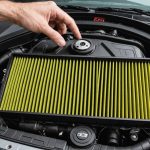Driving safely is paramount, and maintaining your windshield wipers is crucial for this. As the unseen heroes of your car, these rubber components work tirelessly during adverse weather, ensuring you have clear visibility at all times. But how often do you think about their condition? When should you consider a wiper blade replacement? In this detailed guide, we’ll navigate the path to understanding when and why you should replace your windshield wipers. Whether you own a Ford or any other vehicle, this article is crafted to keep you informed for enhanced safety and visibility on the road.
The Role of Windshield Wipers in Vehicle Safety
Windshield wipers form a critical component of your vehicle’s safety arsenal. While they may seem insignificant compared to other parts of your car, their role is indispensable. Imagine driving through a torrential downpour or a snowstorm without these trusty blades. The visibility they provide can be the difference between a safe journey and a perilous one.
Topic to read : What should you know about car financing options available in the UK?
Your windshield wipers function by sweeping water, debris, and snow off the glass, giving you a clear view of the road. The rubber edges of the wiper blades create a smooth, streak-free finish, ensuring you don’t miss any critical details ahead. Over time, however, the integrity of these rubber edges can deteriorate, leading to compromised performance.
Moreover, wipers are not just for rain or snow. They serve a year-round purpose, removing dust and grime that accumulates during sunny days. Without effective wipers, even the smallest obstruction on the windshield could affect your ability to drive safely. Therefore, understanding when to replace them is vital.
Also read : What are the most common causes of engine failure and how can you prevent them?
Signs It’s Time to Replace Your Wiper Blades
Recognizing when your wiper blades require replacement is crucial for maintaining optimal visibility. Several signs can indicate that it’s time to swap out your old blades for new ones:
- Streaks or Smears: If your wipers leave behind streaks or smears, it’s time to consider a replacement. This could mean the rubber has worn out or hardened, reducing its effectiveness.
- Chattering or Skipping: When your wipers chatter or skip across the windshield, it’s often due to worn or misaligned blades. This noise signifies that the blade isn’t making full contact with the glass.
- Reduced Effectiveness: If your wipers are not clearing the entire window, it’s a clear sign they need changing. Partial clearing can lead to blind spots, which compromise your safety.
- Cracked or Split Rubber: Visual inspection can reveal cracks or splits in the rubber. These damages occur due to prolonged exposure to sunlight and temperature changes.
Regularly inspecting and replacing your wiper blades at the first sign of these issues can prevent more significant problems and ensure you always have a clear view ahead.
Optimal Replacement Frequency for Windshield Wipers
Determining the right time to replace your windshield wipers is essential for maintaining visibility. While manufacturers often provide general guidelines, several factors can influence the lifespan of your wiper blades:
- Climate: The environment plays a pivotal role in the longevity of wipers. In areas with harsh weather conditions, such as intense heat, ice, or heavy rain, wipers may wear out faster due to frequent use.
- Material Quality: Not all wiper blades are created equal. High-quality rubber or silicone blades tend to last longer and perform better under extreme conditions. Investing in premium blades might offer a longer lifespan.
- Usage Frequency: If you frequently use your wipers, they will naturally wear out faster. Regularly using washer fluid to clean your windshield can also affect the rubber’s durability.
As a rule of thumb, many experts suggest replacing your wiper blades every six months to a year. For those in regions with severe weather patterns, more frequent replacement might be necessary. Keeping track of your wipers’ condition and replacing them at the first sign of wear can ensure you maintain the highest level of safety and visibility.
Maximizing the Longevity of Your Wipers
While regular replacement of wiper blades is advisable, proper maintenance can extend their life, ensuring they remain effective for as long as possible. Here are some tips to maximize the longevity of your wipers:
- Regular Cleaning: Wipe the rubber edge of your wipers regularly with a clean cloth dipped in washer fluid or water. This removes dirt buildup that can weaken the rubber.
- Avoid Dry Wiping: Running your wipers on a dry windshield can lead to faster deterioration. Always use washer fluid to wet the surface before operating them.
- Park in the Shade: Prolonged exposure to sunlight can harden the rubber, causing it to crack. Whenever possible, park your vehicle in shaded areas.
- Check for Obstructions: Clear any debris or ice from your windshield before using the wipers. Forced contact with hard substances can damage the rubber.
- Routine Inspections: Periodically inspect your blades for signs of wear and tear, even if they appear to be functioning correctly. Early detection of potential problems can prevent visibility issues during inclement weather.
Incorporating these practices into your routine car maintenance ensures that your windshield wipers remain in top working condition, offering you uninterrupted visibility and safety.
Maintaining your windshield wipers is more than just a routine task; it’s an essential part of ensuring safety on the road. By understanding the signs of wear and knowing when to replace your wiper blades, you can enjoy clear and safe driving conditions year-round. Whether you drive a Ford or another vehicle, make it a point to regularly assess and maintain these vital components. Remember, the key to optimal visibility is proactive care and timely replacement of your wipers. Keep your journeys safe and your view unobstructed with well-maintained windshield wiper blades.











